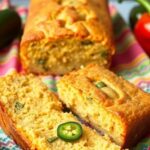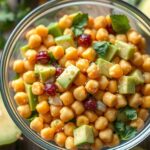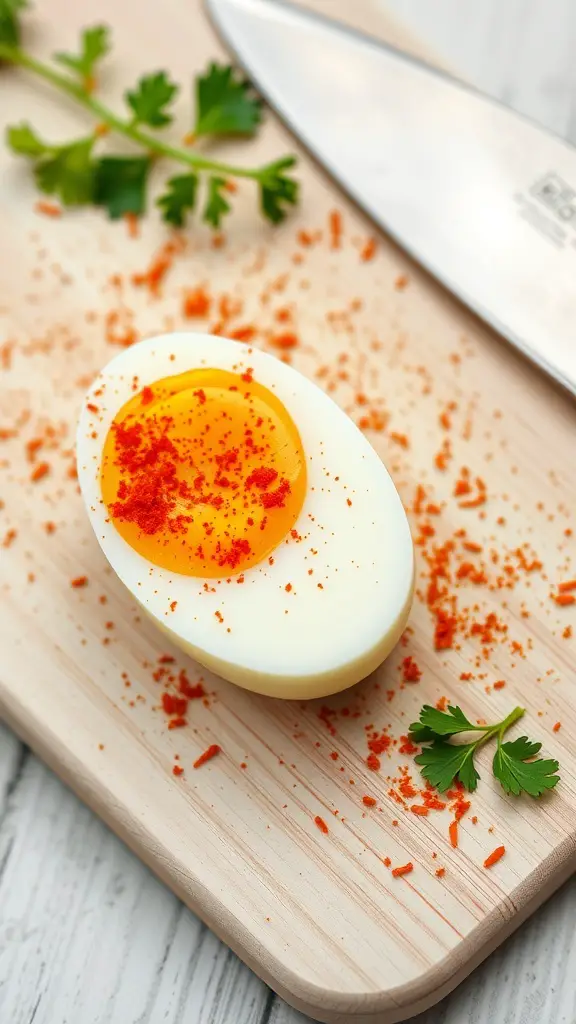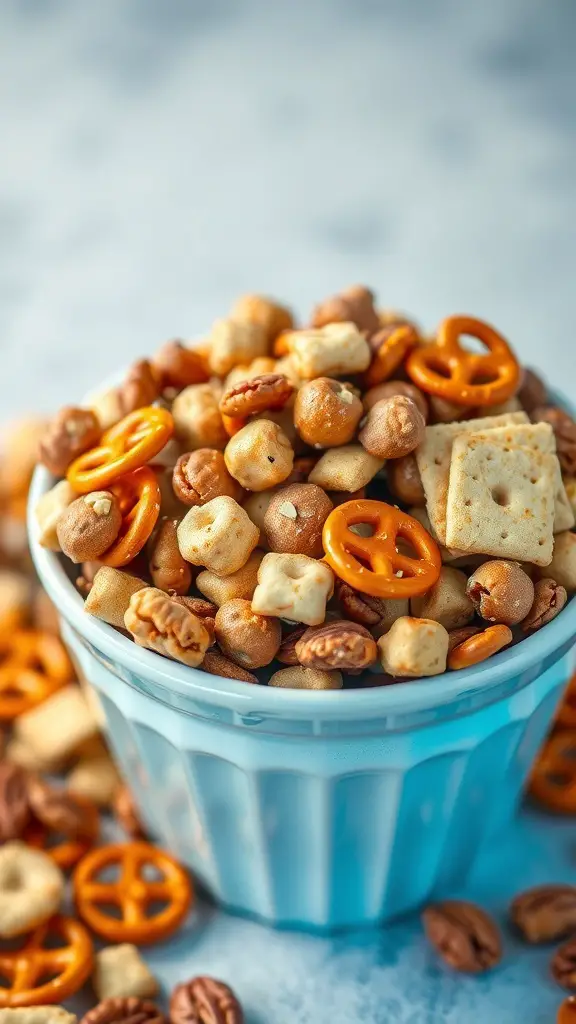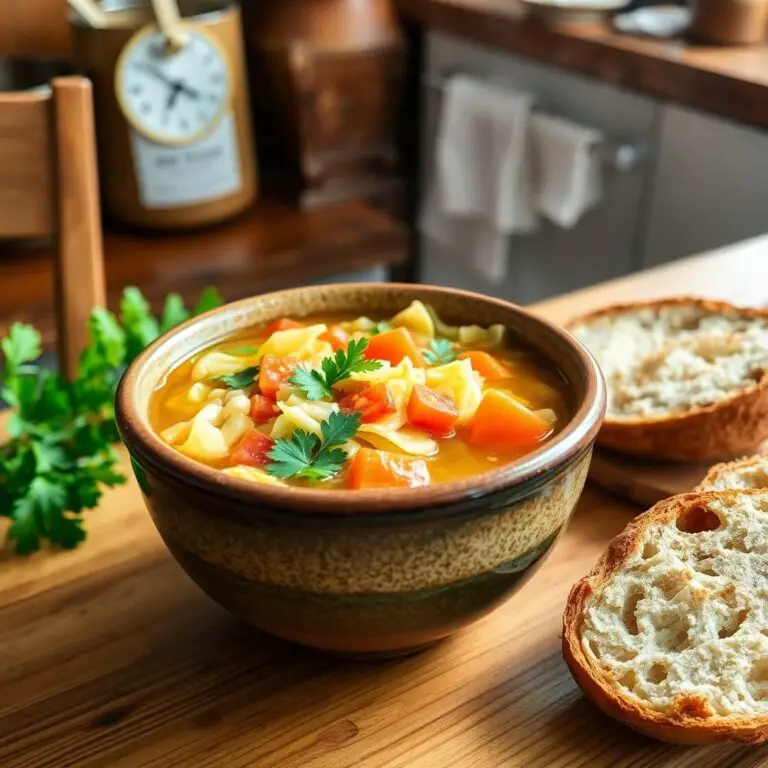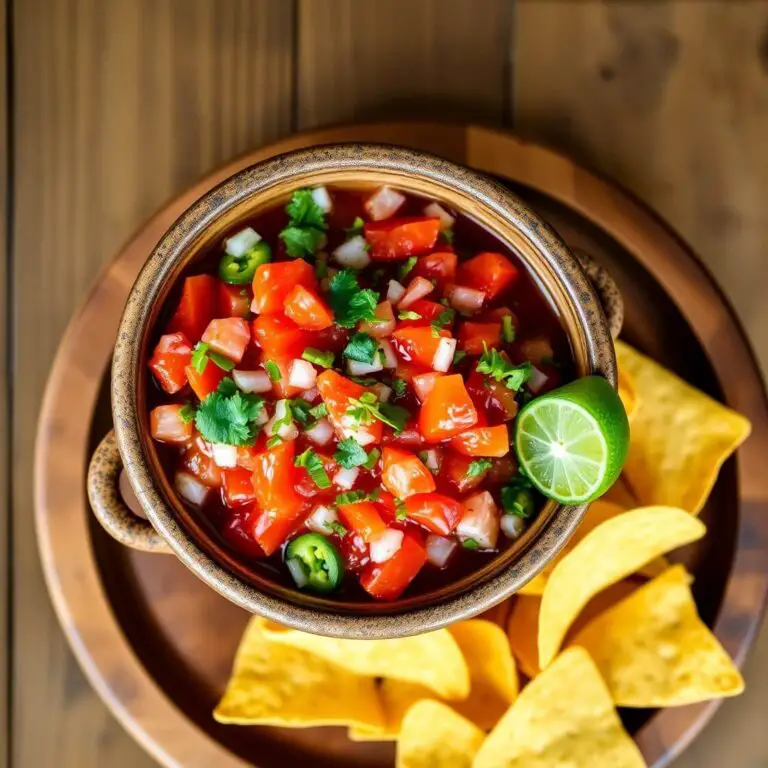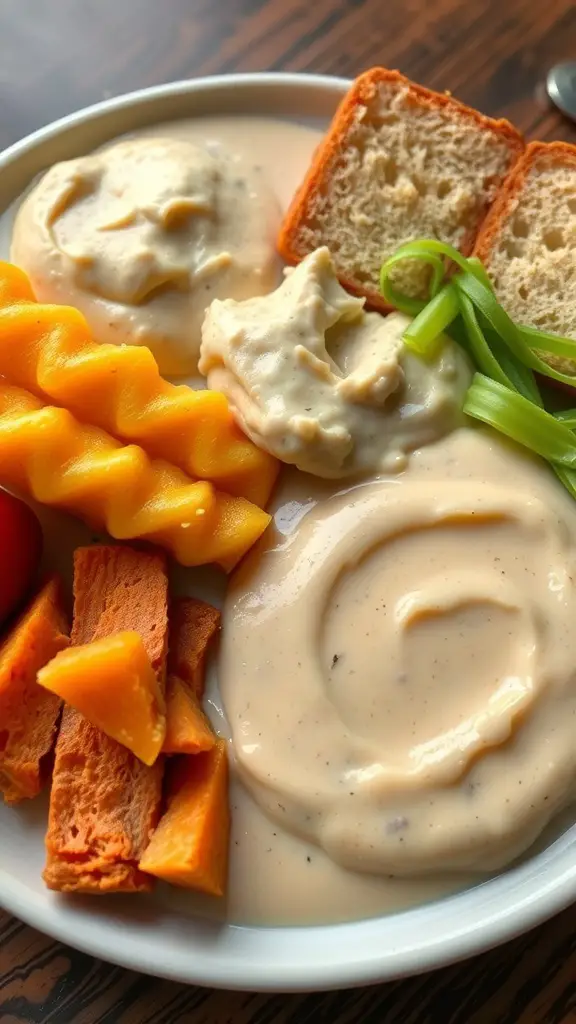
Soft food diets are a practical solution for anyone needing to ease their way back into eating solid foods after surgery, dental work, or digestive issues. This type of diet focuses on easily chewable items, making meals not just manageable but also enjoyable. Whether you’re recovering from an injury or simply looking for a gentler way to nourish your body, there are plenty of delicious and satisfying options to explore!
Soft Food Options for Breakfast
Breakfast is a great time to enjoy soft foods that are easy to chew and digest. The image shows a delightful spread perfect for a soft food diet. You can see a plate with a soft egg on top of a base of creamy oatmeal, garnished with fresh blueberries. This combination is not only tasty but also nutritious.
On the side, there’s a warm cup of chocolate milk, which adds a comforting touch to the meal. The light-colored croissants and additional blueberries provide a nice contrast and variety. Soft foods like these can be satisfying and gentle on the stomach.
Consider starting your day with oatmeal topped with fruits or a soft scrambled egg. Pair it with a smoothie for extra nutrients. These options are filling and can help keep you energized throughout the morning.
Snacks for a Soft Food Diet
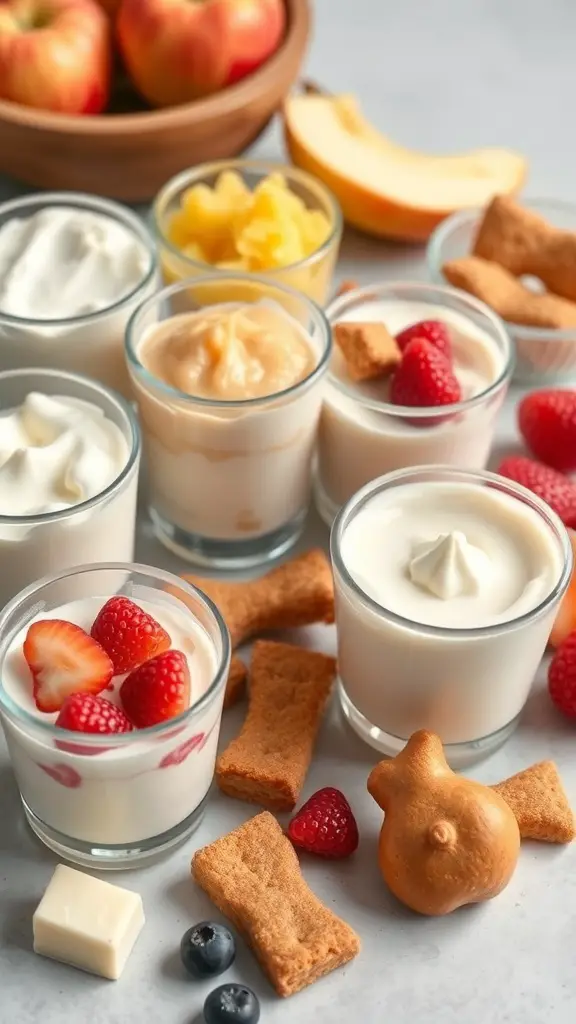
Snacking on a soft food diet can be both satisfying and enjoyable. The image shows a variety of delicious options that are easy to eat and gentle on the palate. From creamy yogurts to fruity purees, there’s something for everyone.
Consider yogurt topped with fresh strawberries or blueberries. This snack is not only tasty but also packed with nutrients. You can mix in some honey for a touch of sweetness.
Another great option is fruit purees. Pineapple or banana puree can be refreshing and provide a burst of flavor. These can be enjoyed on their own or blended into smoothies for a creamy treat.
Don’t forget about soft cookies or graham crackers. They pair well with yogurt and can add a bit of crunch to your snack. Just make sure they are soft enough to chew easily.
Lastly, a bowl of apples can be a great addition. While they may need to be cooked or pureed for easier eating, they offer a sweet and satisfying option.
Hydration Tips for Soft Food Diets
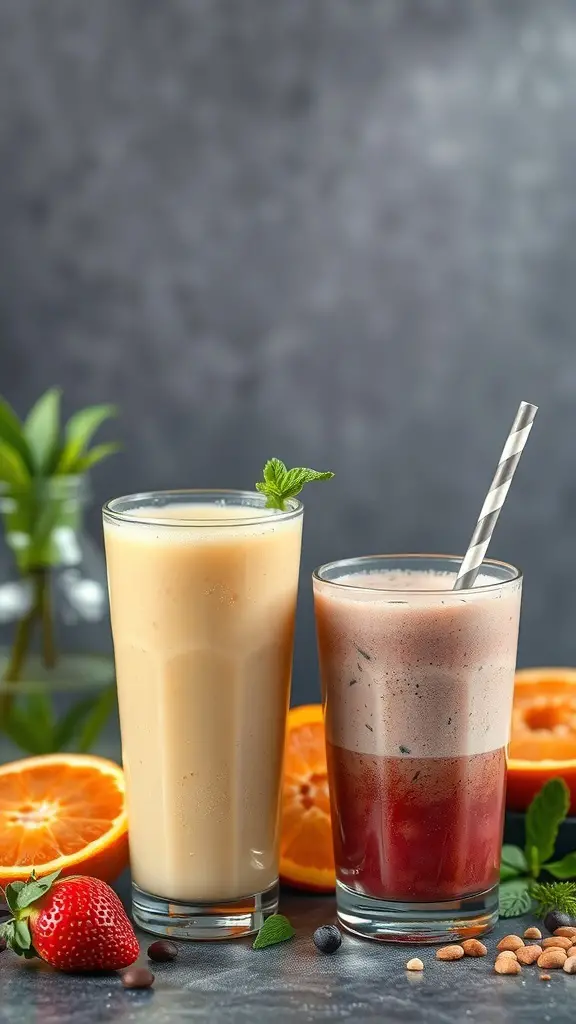
Staying hydrated is key when you’re on a soft food diet. The image shows two refreshing drinks that can help you meet your hydration needs. One is a creamy smoothie, while the other has a rich, layered look, suggesting a delightful mix of flavors.
When choosing drinks, opt for those that are easy to consume and gentle on the stomach. Smoothies are a great option. You can blend fruits like bananas, strawberries, or even spinach for added nutrients. Just make sure to use a base like yogurt or almond milk to keep it smooth.
Another fun idea is to make flavored water. Infuse water with fruits like oranges or berries. This adds a tasty twist without any chunks. It’s a simple way to keep things interesting while ensuring you drink enough throughout the day.
Don’t forget about soups! They can be both hydrating and filling. Pureed vegetable soups or broth-based options can be comforting and nutritious. Just blend your favorite veggies with some broth for a warm drink that’s easy to sip.
Delicious Soft Lunch Ideas

Soft foods can be both tasty and satisfying. Think of creamy mashed potatoes topped with a rich gravy. This classic dish is comforting and easy to eat. Pair it with some soft bread for a complete meal.
Another great option is a smooth pumpkin puree. It’s not only nutritious but also sweet and delicious. You can serve it warm or chilled, depending on your preference.
Don’t forget about pasta! Soft noodles, like macaroni, can be mixed with a creamy cheese sauce. This combination is always a crowd-pleaser and easy to prepare.
For a fruity twist, consider a soft fruit salad. Use ripe bananas, peaches, and mangoes. These fruits are naturally sweet and require no cooking. Just chop them up and enjoy!
Lastly, a warm bowl of oatmeal topped with honey and soft fruits can be a delightful lunch. It’s filling and provides a great energy boost for the rest of the day.
Understanding Soft Food Diets

A soft food diet is designed to be gentle on the digestive system. It’s often recommended for those recovering from surgery, dental work, or certain medical conditions. The goal is to provide nourishment without causing discomfort.
The image shows a variety of soft foods that fit perfectly into this diet. You can see mashed potatoes, yogurt, and soft fruits like strawberries and blueberries. These foods are easy to chew and swallow, making them ideal for anyone on a soft food diet.
Incorporating soft foods can be both nutritious and enjoyable. Think about creamy soups, smoothies, and pureed vegetables. These options not only provide essential vitamins and minerals but also add variety to meals.
When planning meals, consider balancing flavors and textures. Mixing sweet fruits with savory options can keep things interesting. Soft food doesn’t have to be bland; it can be colorful and appealing, just like what you see in the image.
Essential Nutrients in Soft Foods
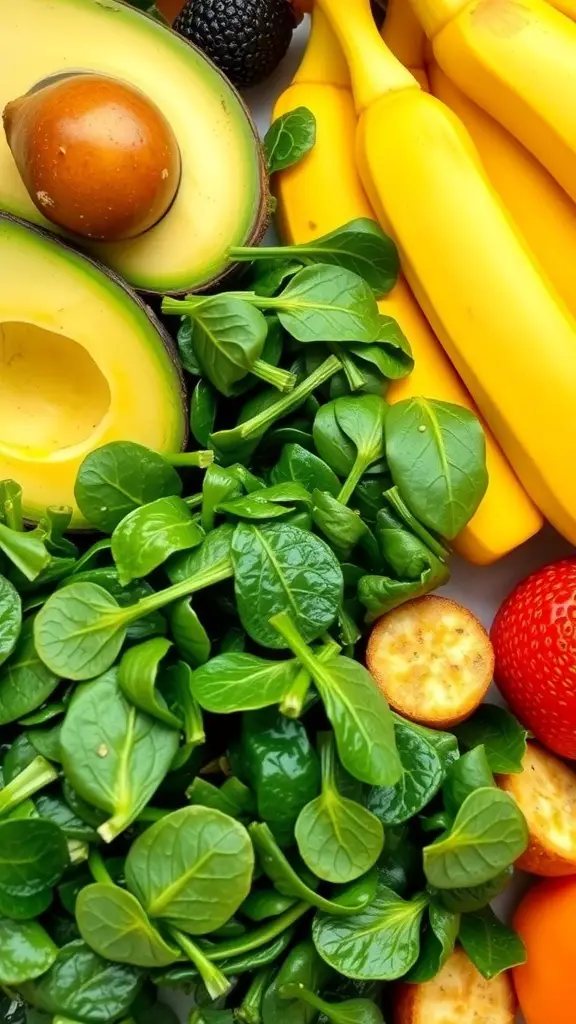
Soft foods can be a great way to pack in essential nutrients without the need for chewing. The image shows a colorful array of soft foods that are not only easy to eat but also nutritious.
Avocados are a fantastic source of healthy fats and vitamins. They provide energy and help with nutrient absorption. Bananas are rich in potassium and fiber, making them a great choice for digestive health.
Leafy greens, like spinach, are loaded with vitamins A, C, and K. They are also a good source of iron, which is vital for blood health. Strawberries add a touch of sweetness and are high in antioxidants, which help protect the body from damage.
Including soft crackers can add a bit of crunch and flavor without being hard on the teeth. These ingredients together create a balanced meal that is easy to prepare and enjoyable to eat.
Benefits of a Soft Food Diet
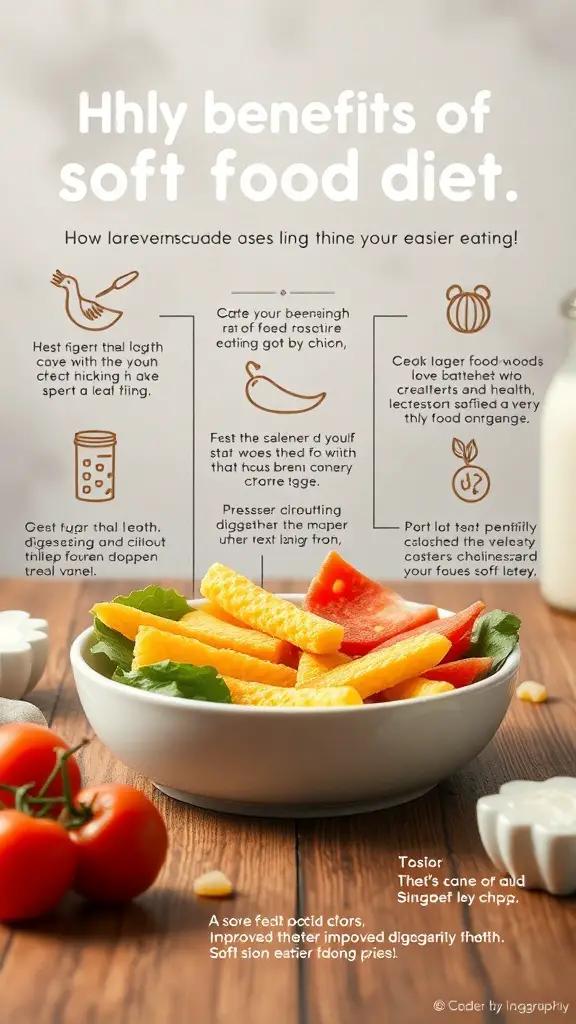
A soft food diet can be a real lifesaver for many people. It’s especially helpful for those recovering from surgery or dealing with dental issues. The image shows a colorful bowl of soft foods, highlighting how appealing and nutritious this diet can be.
One major benefit is ease of eating. Soft foods require less chewing, making meals simpler and more enjoyable. This can help anyone who struggles with hard or crunchy foods.
Another perk is better digestion. Soft foods are often easier on the stomach, allowing for smoother digestion. This can be a relief for those with digestive issues.
Soft foods can also be packed with nutrients. The image features a variety of fruits and vegetables, which are essential for a balanced diet. These foods can help maintain energy levels and overall health.
Lastly, a soft food diet can be comforting. It often includes familiar, warm dishes that can provide a sense of satisfaction and well-being. This makes meals not just about nutrition, but also about enjoyment.
Nutritious Soft Dinner Choices

Soft food diets can be both nourishing and satisfying. When you look at a table filled with soft foods, it’s easy to see how appealing they can be. Think of creamy risottos, tender fish, and perfectly cooked vegetables. Each dish offers a blend of flavors and textures that are gentle on the palate.
Consider a plate of baked salmon, which is not only soft but also packed with omega-3 fatty acids. Pair it with a side of fluffy mashed potatoes or risotto for a comforting meal. Adding steamed green beans or carrots can bring a pop of color and nutrition to your plate.
For a touch of sweetness, roasted squash or sweet potatoes can be a delightful addition. They are soft and naturally sweet, making them a great side dish. You can also include soft fruits like ripe bananas or applesauce for dessert, keeping the meal light and easy to digest.
When planning your soft food dinner, think about balance. Aim for a mix of proteins, carbohydrates, and vegetables. This way, you can enjoy a meal that is not only gentle on your stomach but also full of essential nutrients.
Transitioning to a Soft Food Diet

Transitioning to a soft food diet can feel like a big change, but it doesn’t have to be overwhelming. The image shows a variety of soft foods, like cheese, crackers, and fresh vegetables, which can make this shift easier and more enjoyable.
Start by incorporating foods that are easy to chew and swallow. Think about mashed potatoes, yogurt, and smoothies. These options are not only soft but also tasty!
Gradually replace harder foods with softer alternatives. For example, instead of crunchy apples, try applesauce. This way, you can still enjoy familiar flavors without the discomfort.
Don’t forget to include protein sources like scrambled eggs or soft fish. They provide essential nutrients while being gentle on your mouth.
Lastly, keep experimenting with different textures and flavors. This will help you find what you love while sticking to your soft food diet.
Soft Foods for Different Dietary Needs
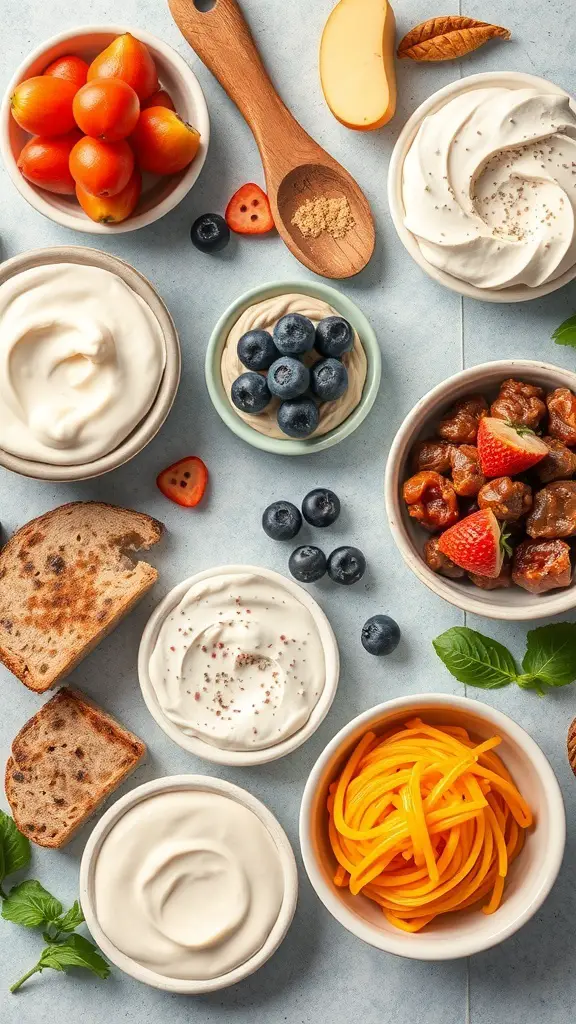
When it comes to a soft food diet, variety is key. The image showcases an array of soft foods that cater to different dietary needs. From creamy yogurt to tender pasta, these options are easy to chew and digest.
Fruits like blueberries and strawberries add a touch of sweetness and nutrition. They can be enjoyed fresh or blended into smoothies. The soft bread and creamy dips offer a comforting texture, perfect for those who may have difficulty with harder foods.
For those needing a bit more flavor, the image includes savory options like cooked vegetables and sauces. These can be mixed with pasta or served alongside other soft foods for a satisfying meal.
Each item in the image represents a thoughtful choice for anyone on a soft food diet, whether due to dental issues, digestive concerns, or recovery from surgery. Keeping meals varied and colorful can make this dietary approach enjoyable and nutritious.
Common Mistakes in Soft Food Diets

Soft food diets can be a bit tricky. The image shows a list of common mistakes people make when following this type of diet. It highlights the importance of being mindful about what you eat.
One mistake is not choosing the right textures. Foods should be soft enough to chew easily. Another issue is not varying the diet. Eating the same soft foods can lead to boredom and nutritional gaps.
Some people forget to include enough protein. This is key for maintaining muscle health. Others may overlook the importance of hydration, which is essential for digestion.
Lastly, portion sizes matter. Eating too much, even of soft foods, can be uncomfortable. Keeping these points in mind can help you stick to a soft food diet successfully.
Soft Food Recipes for Every Meal
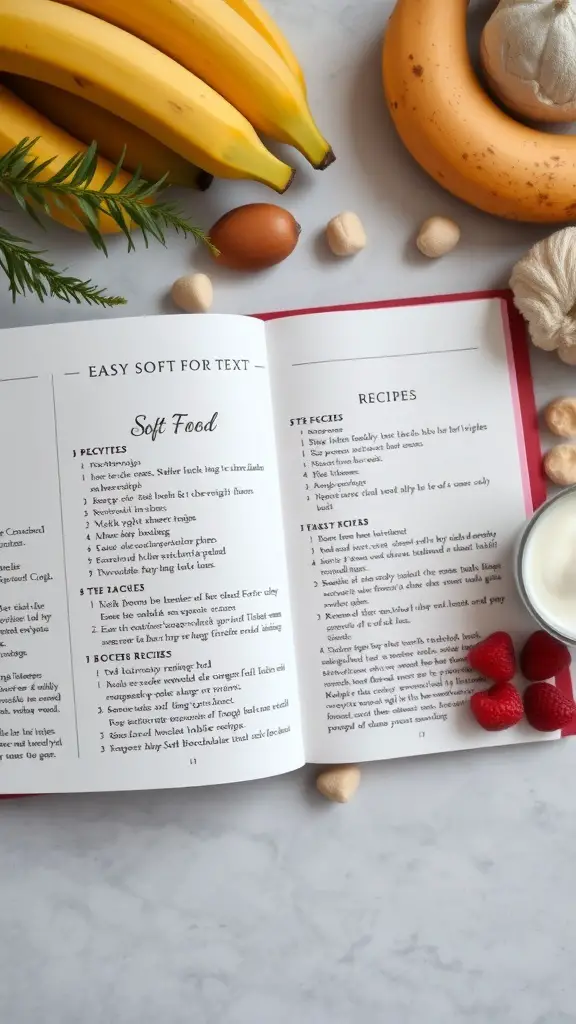
Soft food diets can be both nutritious and satisfying. The image shows a lovely collection of ingredients alongside a recipe book dedicated to soft food. Bananas, yogurt, and raspberries are perfect examples of soft foods that are easy to prepare and enjoy.
Incorporating soft foods into your meals can be simple. For breakfast, consider a banana smoothie. Just blend ripe bananas with yogurt and a splash of milk for a creamy start to your day. For lunch, mashed potatoes with a bit of butter can be comforting and filling.
Dinner can be just as delightful. Think of soft-cooked vegetables or a warm bowl of oatmeal. You can even try a simple soup, blending cooked veggies with broth for a smooth texture. Snacks can include applesauce or pudding, which are both easy to make and delicious.
Preparing Soft Foods at Home
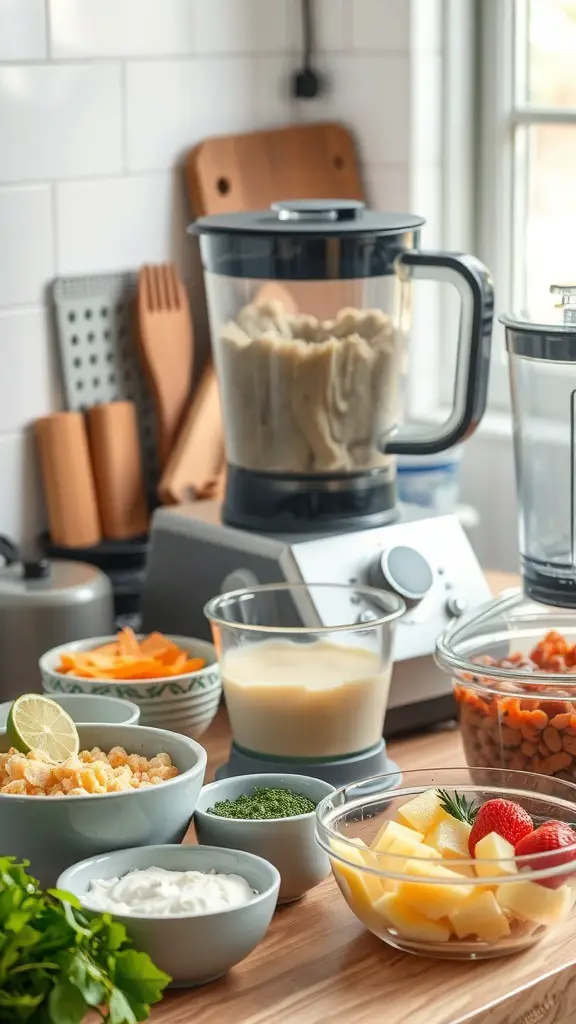
Making soft foods at home can be simple and fun. The image shows a kitchen setup with various ingredients ready for blending. A blender sits prominently, hinting at the ease of creating smooth textures.
Start with soft fruits like bananas and peaches. You can blend them with yogurt for a creamy treat. Adding a splash of milk or juice can help achieve the desired consistency.
Vegetables are also great for soft food diets. Cook carrots or sweet potatoes until tender, then mash or blend them. Season lightly for flavor without overwhelming the palate.
Don’t forget about grains! Oatmeal or rice can be cooked until soft and mixed with fruits or pureed vegetables. This adds nutrition and variety to meals.
Herbs and spices can enhance flavors without adding texture. Fresh cilantro or a squeeze of lime can brighten up your dishes.
Overall, preparing soft foods at home is about creativity and comfort. With the right ingredients and a blender, you can whip up delicious meals that are easy to eat.
Soft Food Diet for Post-Surgery Recovery
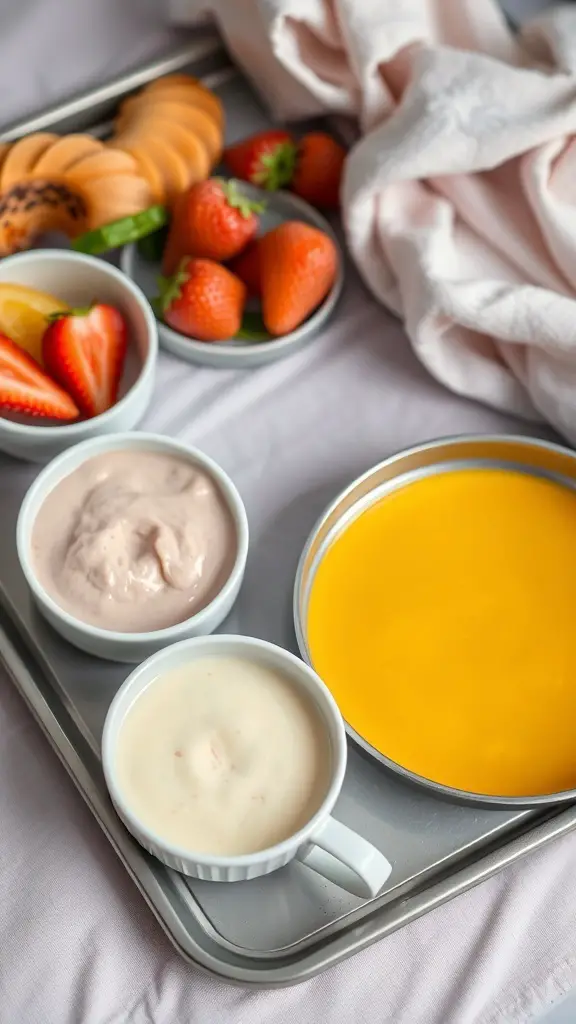
After surgery, a soft food diet can be a gentle way to nourish your body. The image shows a delightful spread of soft foods that are easy to eat and digest. You can see creamy desserts and fresh fruits, making it both appealing and nutritious.
Soft foods like yogurt, pudding, and pureed fruits are perfect for recovery. They provide essential nutrients without putting stress on your healing body. The bright colors of the strawberries and other fruits add a cheerful touch to your meals.
Incorporating these foods can help you stay satisfied while you heal. You might enjoy a bowl of yogurt topped with fresh strawberries or a smooth fruit puree. These options are not only tasty but also help keep your energy up.
Remember to stay hydrated and listen to your body. Soft foods can be a comforting part of your recovery journey, making it easier to focus on healing.
Cultural Soft Food Dishes

Soft food diets are rich in flavors and textures, often reflecting the culture they come from. The image showcases a variety of soft dishes that are not only easy to eat but also packed with taste. Each bowl tells a story of tradition and comfort.
For instance, the creamy yellow dish might be a type of polenta or cornmeal, common in many cultures. It’s smooth and can be paired with savory sauces. The orange dish could be a spiced pumpkin puree, a staple in various cuisines, bringing warmth and sweetness to the table.
Then there are the fluffy grains, likely made from rice or couscous, which serve as a perfect base for many meals. The soft cheeses and baked goods add a delightful contrast, making the meal more satisfying.
Each item in the image represents a unique culinary heritage. From the spices to the cooking methods, these dishes highlight how soft foods can be both nourishing and delicious, suitable for anyone needing a gentler diet.



